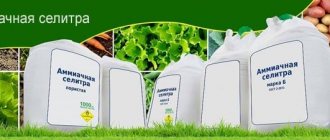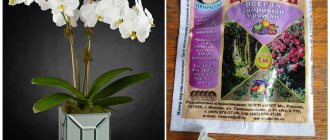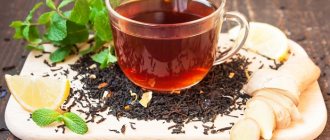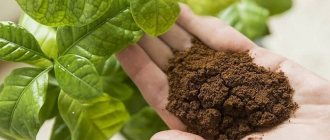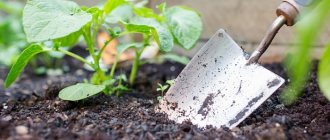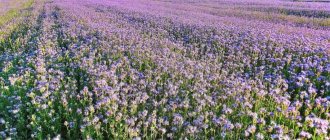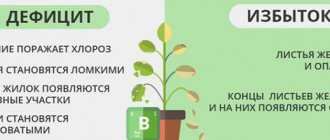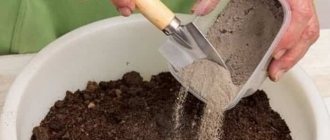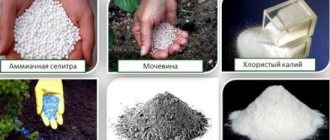How to store ammonium nitrate at home?
To preserve the original physical and mechanical properties of ammonium nitrate
it must
be stored
in special closed, dry and clean warehouses in bitumenized paper and plastic bags in stacks no more than 2 m high.
Ammonium nitrate
is highly soluble in water. This process occurs with the absorption of heat.
Interesting materials:
How much does a mesh bed weigh? How much does a cube of a Christmas tree weigh? How much does a cube of granite crushed stone 20-40 weigh? How much does a cubic meter of wood chips weigh? How much does a square meter of old city tiles weigh? How much does a horse weigh per year? How much does a small border weigh? How much does a metal bed with mesh weigh? How much does a meter sidewalk curb weigh? How much does a monolithic slab weigh?
Application of fertilizer
To use saltpeter as a fertilizer, you need to know the features of this procedure. If you water with liquid fertilizer, it is better to pour it at the root.
The ammonium nitrate solution does not need to be stored for a long time, otherwise the nitrogen will erode and will not reach the roots.
For root crops, many people use the digging technique. What it is? This technique is applied according to the following scheme:
- A small groove is dug between the rows of root crops to a depth of 3 cm.
- Ammonium nitrate is poured into it: 5-7 g per 1 sq. m.
- Then the furrow is spilled with water so that the fertilizer dissolves and gets to the roots.
Saltpeter is especially useful for potatoes. It is poured into the holes before planting, but you need to know the application rates:
- In poor depleted soil - 20 g in each hole;
- In the ground in good condition - 10 g per hole.
Fruit trees can also be fed with nitrogen fertilizer. In order for ammonium nitrate to benefit trees, there are instructions for using this nitrogenous substance, from which you do not need to deviate. An extra dose will not bring any benefit, but it can do harm.
Under bushes and tree trunks, ammonium nitrate is applied in the form of dry fertilizing to the tree trunk circle, also by digging into the furrows. Then you should water abundantly, otherwise the ammonium nitrate will not dissolve and will not feed the roots with nitrogen.
For flowers, the use of saltpeter will also be of great benefit. It is applied under flowers in the spring and only once. For flowers in spring, saltpeter will be a very useful fertilizer.
When to apply to the soil
Ammonium nitrate is a very useful fertilizer if you follow the timing and application rate.
Attention! It will cause a lot of harm to all garden crops if fertilizing is applied 2 weeks before the fruits ripen.
What happens if this condition is not met? The fruits will accumulate harmful substances and become hazardous to health.
In other cases, its use will be beneficial for plants. For example, vegetable crops need to be fed with nitrogen 2 times per season: first before the flowers appear, then after the ovary appears.
As soon as the first sprouts of root crops appear, after 15-20 days you can water them. Fertilizing seedlings is carried out with the following solution: 30 g of saltpeter per 10 liters of water or 6 g of powder in each hole.
For fruit trees, liquid ammonium nitrate will be useful during the leaf blooming period. Then you can apply it at the root three times per season.
In the first year after planting, young seedlings can be fed - 20 g per 1 sq. m.
If you look at how saltpeter is used to feed our main garden crops, you should start with tomatoes and cucumbers. The first feeding of tomatoes is carried out with a liquid solution when picking, the second watering after 10 days. Before planting in the ground, they are watered at the root for the third time.
The drug is applied to cucumbers 2 weeks after planting in the ground, and then at the beginning of flowering.
Thanks to ammonium nitrate, strawberries will also open their carved leaves more magnificently. The next year after planting, dry fertilizer is scattered between the rows and watered.
In order for the flowers in the garden to bloom in lush colors, they also need nitrogen fertilizing. As soon as the first sprouts of flowers appear in the spring, they need to be fed for the first time, and after 14 days for the second time.
How much of the drug should be diluted for irrigation? 20 g of the drug per bucket of water is enough.
By adding potassium salts, you will only enhance the effect of this fertilizer.
Application rates for different plants
In order for plants to grow well, the application rate of ammonium nitrate must be observed. If the norm is not observed, then a large amount of harmful nitrates will accumulate in the fruits.
Application rate:
- When planting root crops or seedlings of vegetables (except melons), as well as berries, saltpeter is added at 25-30 g per 1 sq. m. m, by digging it into the ground to a depth of 15-20 cm.
- If the land at the dacha has not been cultivated for a long time, then when digging, the norm should be increased to 40 g per 1 sq. m. m.
- During the growing season, berries and vegetable crops must be fed with the following solution: 20 g of the substance, diluted in a bucket of water. In dry form: 8-9 g per seedling.
- For perennial flower crops, it is permissible to use 25 g per 1 sq. m. m.
For fruit trees apply as follows:
- In the form of granules: 15-20 g per 1 sq. m. A furrow is dug to a depth of 20-30 cm, then powder or granules are poured in, followed by watering.
- It is convenient to apply in liquid form: dilute 20-30 g of ammonium nitrate in a bucket of water, pour over the tree trunk.
For fruit trees, dry ammonium nitrate is used in the spring only once, and it is recommended to apply it in liquid form two more times. Fruit crops are fertilized after flowering, 5-6 days later, and again after 30 days.
Fertilizing winter crops
The use of lime ammonium nitrate to fertilize winter crops in agriculture has been practiced for a very long time. The properties of this fertilizer are close to neutral, taking into account the physiology of plants, so they will not cause harm.
However, even when introducing it, a certain norm must be observed.
It contains 26-28% nitrogen, 4% calcium, 2% magnesium. This substance, compared to ordinary saltpeter, has improved properties; it absorbs less moisture and can be easily added to the soil during plowing.
Where can I get this fertilizer? Sold in specialized stores or online. The ordered fertilizer can be delivered by any type of transport, except airplanes.
The value of this fertilizer is that it contains calcium and magnesium, and also that it can be used for all crops and on all soils.
The application of this type of ammonium nitrate per 1 ha depends on the growing season. For grain crops, fertilizer is applied during the cultivation period before sowing in the amount of 30-40 kg/ha. In the following periods of the growing season, it is applied as needed.
Application against weeds
In any garden, no matter how you fight them, weeds grow everywhere. They harm crops by taking away water, nutrients, and sometimes blocking sunlight. Therefore, weeds must be constantly combated.
Pulling out weeds and using ammonium nitrate will help with this.
Ammonium nitrate can serve as an excellent weed killer in the garden. It is enough to dilute 3 g of powder or granules in 10 liters of water and spray the grass. Ammonia will burn the weeds and at the same time feed the soil with plant debris.
This is an effective remedy that will help burn a large number of weeds, and then, settling in the soil, it will begin to feed all plantings as fertilizer. It is better to use saltpeter to kill weeds in early spring, when they are just beginning to appear.
Composition of potassium nitrate
Potassium (potassium) nitrate is a potassium-nitrogen complementary food for cultivated plants, which is suitable for all types of soil. Nitrate contributes to the life of plants from the very moment of planting. Fertilizers enhance natural processes: root consumption of nutrition from the soil, respiration and photosynthesis, disease resistance.
In natural conditions, potassium nitrate is colorless crystals, which when crushed become a white crystalline powder. It may cake, but the chemical properties do not change. In any form, potassium nitrate has good hygroscopicity: it easily dissolves in water, which allows you to make solutions for feeding different types of plants in the garden. Potassium nitrate can be dissolved in glycerin, liquid ammonia and hydrazine. The substance is non-toxic.
Organic fertilizers for feeding indoor plants
Compost, well-rotted manure, bird droppings and other organic matter will appeal to potted plants. Some gardeners include wood ash in this list. Thanks to fertilizers, the soil becomes looser, the roots receive more oxygen and water, and absorb nutrients faster. Organic matter also saturates the soil with nitrogen, which is responsible for the growth of green mass. Such fertilizers will have a particularly good effect on large and fast-growing crops: palm trees, indoor roses, vines, citrus fruits, pelargoniums, etc.
But not all plants will be happy with such feeding. Manure and compost are contraindicated for bulbous and corm flowers (gloxinia, hyacinth, amaryllis, etc.), variegated decorative foliage plants (fittonia, hyposthes, coleus, etc.).
For fertilizing, you can buy ready-made organic preparations based on vermicompost (Vermistim, Humisol) in the store, or use the fertilizers that you usually apply to the beds: compost, humus, bird droppings. True, before adding it to indoor plants, organic matter must be disinfected. It is best to ignite it over a fire, then leave it for 3 weeks to recover. The dilution rate also depends on the type of fertilizer:
- mullein, humus, compost - 1 tbsp. for 1 liter of water;
- bird droppings – 1 tsp. for 1 liter of water;
- wood ash - 3 tbsp. for 1 liter of water.
Before applying organic fertilizers, be sure to water the plants with clean, settled water. The frequency of adding organic matter is no more than once a month.
Organic fertilizers have also proven themselves when planting or replanting plants. Mix a small amount of compost or humus into the soil to make it lighter and more fertile. Wood ash can also be added to the soil before planting. Pelargonium, fuchsia and begonia will especially like the fertilizer.
For all its advantages, organics still have one significant drawback - an unpleasant odor that can appear in the room for about several hours. Therefore, you should not be overzealous with this feeding. Or you can use it only for plants in the winter garden.
- Everything you wanted to know about organic fertilizers
No “chemistry”, only environmentally friendly fertilizers.
The choice of fertilizers depending on the season
When spring comes, all plants become active. Indoor flowers are no exception. Spring is the time of year when we should start fertilizing indoor flowers so that they properly begin their development after a period of dormancy and delight us with intense flowering.
With the onset of March, the number of sunny days increases, and indoor plants begin their growing season. This is the best time to transplant them, take cuttings, or grow them from seeds. When the owner of a potted crop decides that the plant does not need to replace the soil, it must be fed.
All feeding is carried out from March to September, once every half month . Then, starting in mid-October and in the following months, rest time begins for the plants. Some potted crops are an exception. Plants that bloom in autumn and winter:
- poinsettia;
- cyclamen;
- azalea;
- Decembrist;
- hippeastrum.
Beginning flower growers often wonder how to fertilize indoor crops in winter. When plants are in a dormant period, they do not need to be fed at this time . Fertilizers are only relevant for the above flowers , since they develop and bloom.
FAQ
The average person has many questions regarding ammonium nitrate: how to store it, where to buy it, whether it is dangerous or not.
Where to buy ammonium nitrate?
Ammonium nitrate can be found in stores that sell everything for the garden and garden. It can also be ordered online at a wholesale price directly from the manufacturers of this fertilizer. It can also be purchased in online stores specializing in the sale of summer cottage goods, or special sites that sell these specific fertilizers.
How to store ammonium nitrate?
Ammonium nitrate is an explosive drug, so special storage conditions must be created for it. The drug should be stored in a dry, well-ventilated room, protected from light and high temperatures. The maximum temperature should not exceed 30ºC. Direct sunlight on ammonium nitrate granules is strictly prohibited.
August root feeding of cucumbers with homemade complex fertilizer to increase yield
In closed packaging, the shelf life of the fertilizer is no more than 3 years. In printed form, saltpeter must be used within 3 weeks, since nitrogen loses its beneficial properties when exposed to oxygen.
Is there a danger to humans?
Despite all the useful and unique properties of ammonium nitrate as a fertilizer, it can cause certain harm to human health.
- The ingress and influence on the body of nitrates, nitrogen elements, which are contained in the soil after feeding plants with ammonium nitrate. To avoid this, it is necessary to observe the correct dosage in certain fertilizing methods.
- The drug can affect the human respiratory system during the process of fertilizing the soil or preparing a solution. Therefore, when working with saltpeter, you need to use personal protective equipment: a respirator, gloves. For work, choose dry, windless weather.
If you adhere to these rules, ammonium nitrate is a completely safe product for humans.
Is it possible to apply ammonium nitrate in the fall?
Ammonium nitrate contains about 35% nitrogen, which is well accepted by plants as a fertilizer. Since in winter the roots of trees and shrubs continue to grow slowly, but the drug works well even in frozen soil, it is recommended to apply ammonium nitrate in the autumn, even closer to winter, scattering it around the area and leveling it with a rake.
Is it possible to mix ammonium nitrate with other fertilizers?
The peculiarity of ammonium nitrate is that it cannot be combined with all fertilizers. Thus, urea, dolomite flour, chalk, superphosphates, lime, potassium carbonate in the same mixture with saltpeter can lead to spontaneous combustion or explosion.
Is it possible to harm plants by fertilizing with ammonium nitrate?
If you follow the correct dosage, timing and period of application for different plants, ammonium nitrate will not harm you. But in case of an overdose of fertilizer, nitrates and nitrogen-containing substances can accumulate in the fruits, which is not very good for the plant, and subsequently for the human body when they are consumed.
Ammonium nitrate is intended mainly for root feeding of plants. Therefore, if the solution gets on the leaves of crops, a burn may occur, and, as a result, drying and wilting.
What is the difference between ammonium nitrate and urea?
Urea (urea) is an organic fertilizer, while ammonium nitrate is a mineral salt of nitric acid.
- Urea contains more nitrogen than nitrate, which characterizes it from the best side, since nitrogen is a valuable substance for the proper growth and development of the plant.
- According to the method of application, urea, unlike saltpeter, can be used for root feeding and during the period of active plant growth.
- Ammonium nitrate is better absorbed by plants than urea.
- Urea does not tend to increase soil acidity, so it is suitable for all types of soil and for almost all agricultural crops.
- Ammonium nitrate is prone to spontaneous combustion. Urea does not have this ability. It absorbs moisture well, so it cannot explode or burn.
- The advantage of ammonium nitrate over urea is that it can also be used on frozen soil. Whereas urea dissolves well only on heated soil.
It cannot be said that one fertilizer is worse or better than another. Each of them, due to its properties, can be used depending on the results that need to be obtained from fertilizing crops.
Composition and properties of potassium fertilizer
Potassium nitrate is supplied to the market in the form of colorless crystals of various shapes. The drug is of inorganic origin and is characterized by rapid solubility in water. The smell is neutral. The product stimulates crop growth due to the presence of nitrogen in the composition. Thanks to this, the complex is actively used in vegetable gardens and personal plots.
Other names for potassium nitrate are potassium nitrate, potassium nitrate and Indian nitrate.
The difference between potassium salt and nitrate
The main difference is that potassium salt is not a fertilizer, although it is used to feed plants. The product is extracted from the bowels of the earth. Salt, which contains 40% potassium, also differs in color - light brown or pinkish crystals. When purchasing fertilizer, you need to pay attention to the product labeling.
Properties of potassium nitrate
Chemical formula – KNO3. K and N allow the complex to be used as the main nutrition for crops. This composition of ingredients has the following effects on vegetables, shrubs and trees:
- growth stimulation;
- root development;
- increasing protective functions;
- soil nutrition.
It is allowed to use a potassium-nitrogen complex as a top dressing. This is due to the presence of nutrients. Nitrate is also applied as an independent fertilizer to increase the protective functions of crops. Strong immunity promotes the rapid growth of vegetables and trees, prevents the development of soil diseases, and resists pests. As a result of the work of potassium nitrate, farmers receive high yields.
The disadvantages of bait are the lack of microelements in its composition and rapid leaching from the soil.
This is what potassium nitrate looks like without packaging, friable white powder
What is calcium nitrate?
Other names for calcium nitrate are calcium nitrate and calcium nitrate. The fertilizer is a salt of nitric acid with the chemical formula Ca(NO3)2. Those. Calcium and nitrogen work in the fertilizer:
- nitrogen gives plants a quick start, promotes the growth of vegetative mass,
- Calcium promotes the growth of the root system and strengthens the cellular structure of the plant.
Calcium nitrate is a highly hygroscopic substance, so it must be stored without access to moisture.
Beneficial properties of potassium nitrate
For full growth of the plant, replenishment is needed, especially if the soil conditions are poor. Fertilizers with potassium strengthen plants, increasing their resistance to drought and frost, and promote the formation of buds on flowering shoots.
Effects of potassium nitrate:
- acceleration of plant growth;
- improvement of cellular respiration;
- activation of the immune system;
- protection against diseases;
- increasing productivity;
- increasing root absorption;
- increase in fruits;
- increased resistance to frost;
- increasing shelf life;
- improvement of taste.
Doses and timing
What is the best way to fertilize the following indoor plants, and how many ml of fertilizer to give for each of the listed indoor flowers:
| Plant names | Fertilizer | Deadlines | Doses |
| Violet | Mister Color - Saintpaulia | Every 14 days of the growing season | For 2 liters of liquid 1 cap of product |
| Fern | Liquid organic fertilizers | From May to September | Compared to the instructions, reduce the dosage by 2 times |
| Lemon | Universal complex mixtures | From the beginning of March to October once every 3 weeks | According to instructions |
| Pelargonium | Ready-made fertilizers for flowering plants | The entire growing season, excluding dormancy | According to instructions |
| Begonia | Balanced mineral fertilizer | Fertilize when the flower reaches a height of 10 cm | According to instructions |
| Potted pepper | Complex mineral nutrition | As needed | According to instructions |
| Pomegranate | Complex mineral fertilizers | During the growing season 2 times a month | According to instructions |
| Orchids | Mister Orchid Flower | During the growing season | 1 cap per liter of liquid |
| Indoor roses | Complete mineral supplement | Once every half month during the growing season | According to instructions |
The existence of so many different fertilizers and growth stimulants can be confusing for novice gardeners. But with experience, properly caring for your green friends, including feeding, will not be difficult. The abundance of recipes in this article can be confusing - feel free to choose one or two you like and experiment - if you follow the dosages, there will be no harm, and the benefits may be obvious.
Why do plants need nitrogen and how to determine its deficiency
It is not too difficult to determine nitrogen deficiency yourself. A deficiency of this element in the soil becomes a serious problem for cultivated crops, so you need to pay close attention to the following signs:
- growth and development delays;
- change in the natural color of the leaves to a pale yellow color;
- the appearance of so-called burns and premature death of plants;
- reduced protein content in grain crops.
Ready-made soils, in which seedlings are most often grown, may initially be characterized by an insufficient amount of nitrogen. Among other things, excessive or too frequent irrigation measures that wash away nitrogen salts can contribute to a decrease in the content of this element in the soil . Some plants, due to their botanical characteristics, require increased amounts of nitrogen-containing components.
